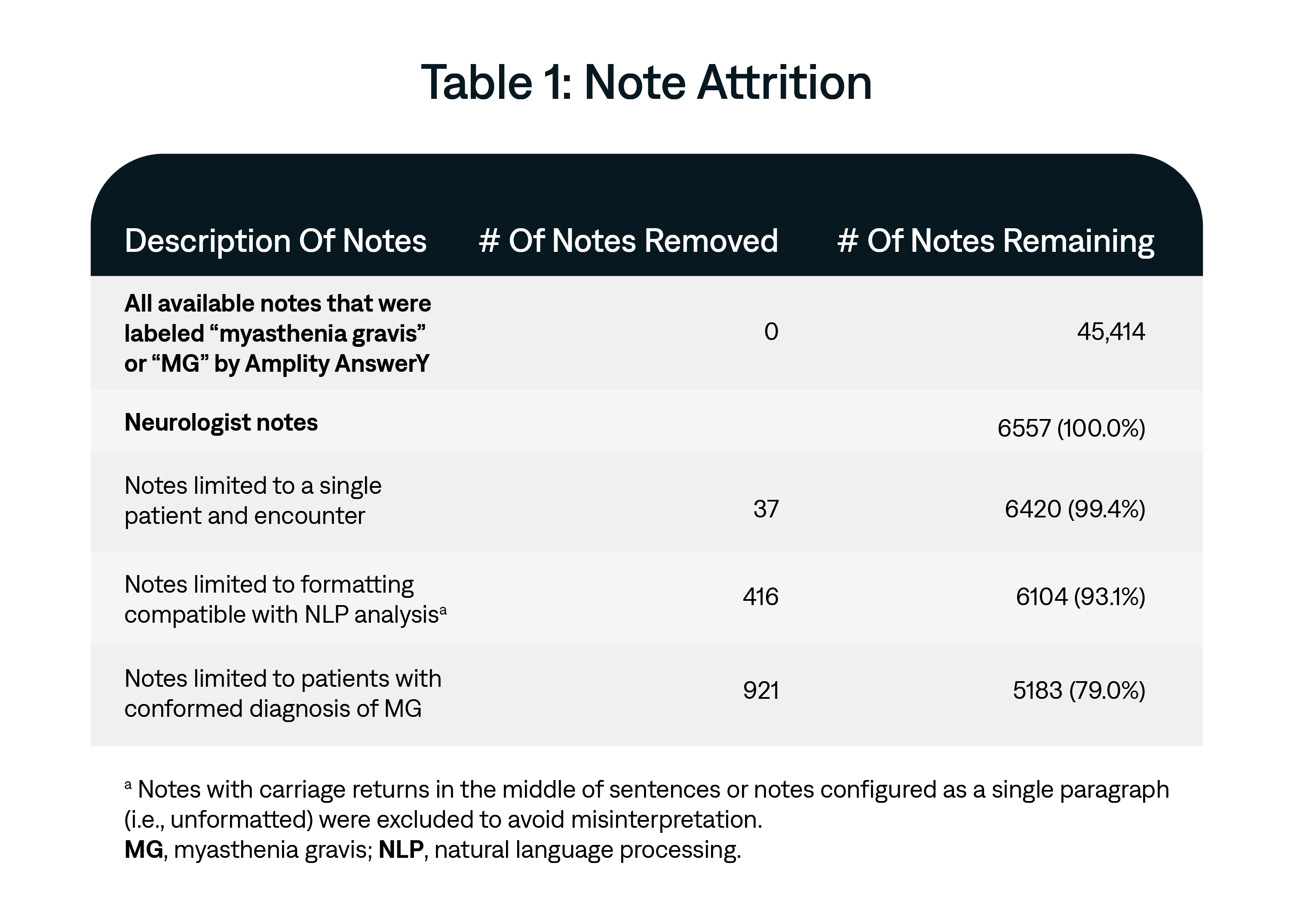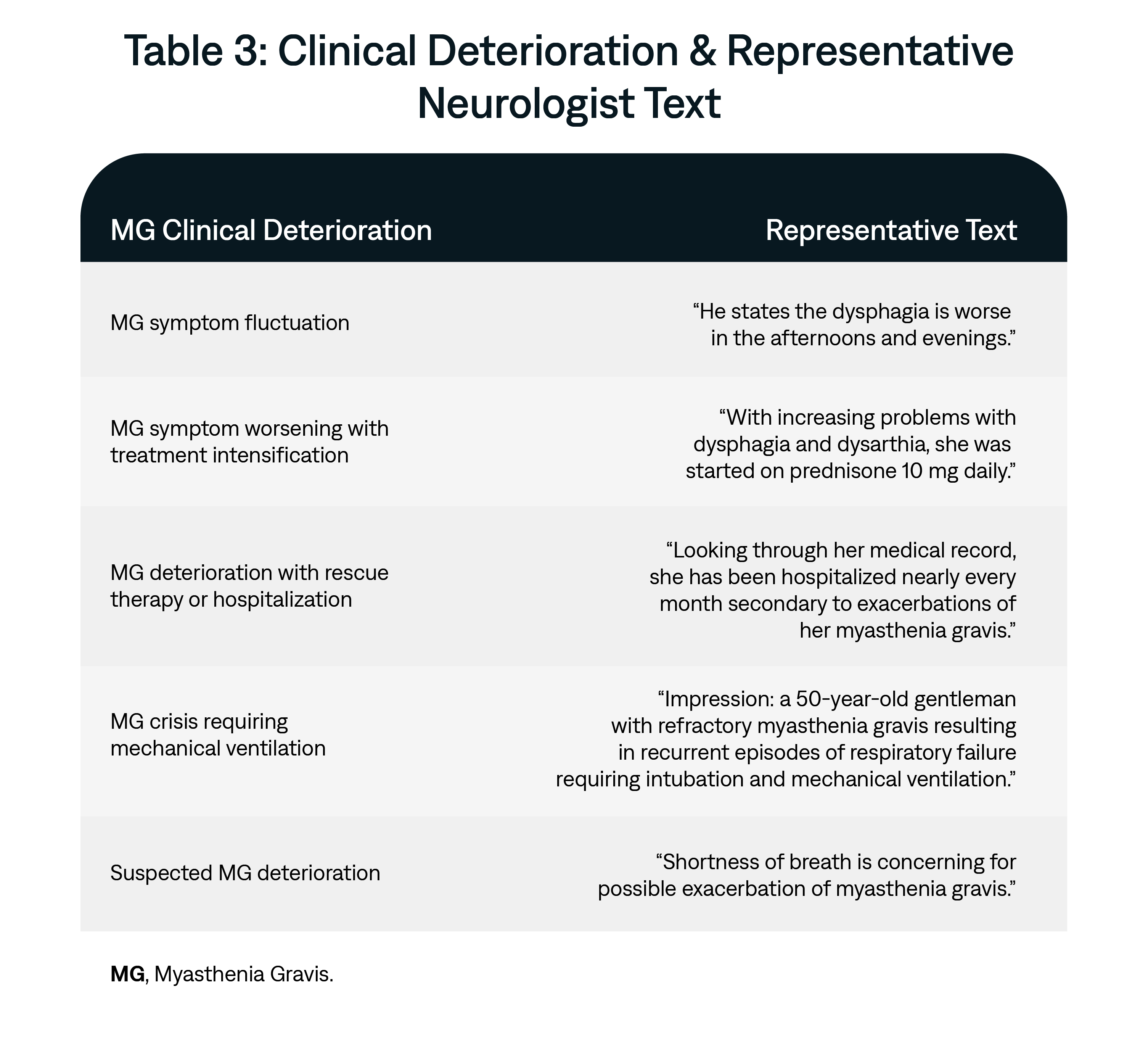
This poster was originally presented at Myasthenia Gravis Foundation of America (MGFA) American Association of Neuromuscular & Electrodiagnostic Medicine (AANEM) 2023, November 1-4, in Phoenix, AZ.
Authors: Jonathan Darer, MD, MPH; Jacqueline Pesa, PhD, MPH; Zia Choudhry, MD; Alberto Batista, PharmD, MS; Purva Parab, PhD; Xiaoyun Yang, MS; Raghav Govindarajan, MD
Affiliations: Health Analytics; Janssen Scientific Affairs, LLC, Titusville, NJ, USA; Janssen Pharmaceutical Companies of Johnson & Johnson; Hospital Sisters Health Systems Medical Group
 According to Table 2:
According to Table 2:

AnswerY adds powerful context based on HIPAA-compliant patient-provider conversations. See how in other research topics, including disparities in healthcare access, GLP-1s, and biomarker testing in NSCLC.